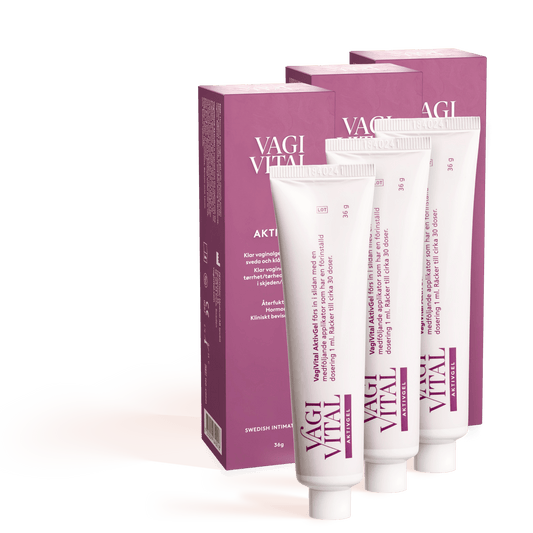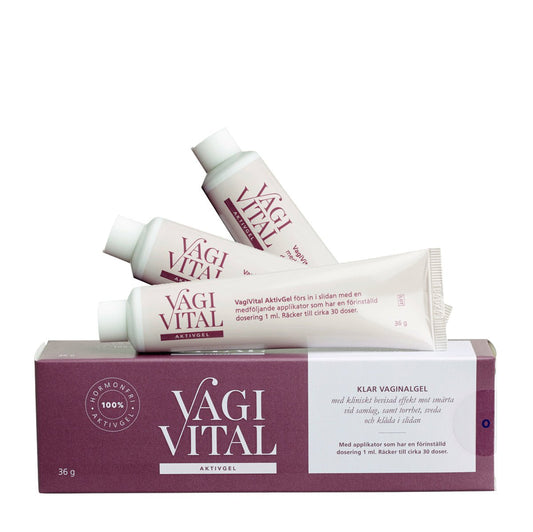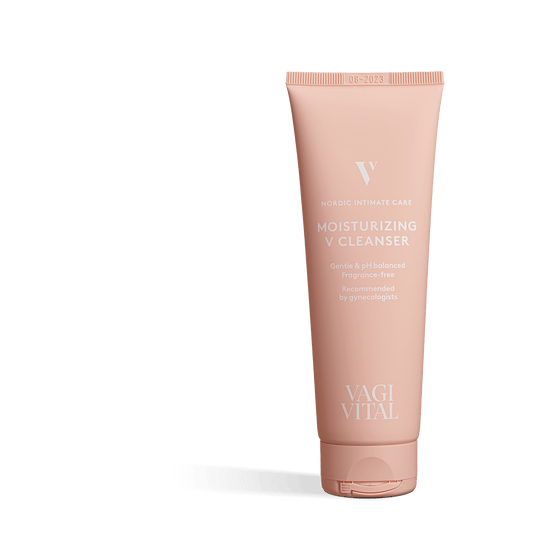Endometriosis – When Menstrual Pain Becomes an Invisible Hell
Endometriosis affects about one in ten people with a uterus – yet it takes an average of 7 to 10 years to receive a diagnosis. How can that be? In the meantime, many suffer in silence with severe pain, lack of help, and the feeling of not being believed. What exactly is happening in the body? Why does it affect some but not others? And how can symptoms be relieved – whether you have a diagnosis or only a strong suspicion?
WHAT IS ENDOMETRIOSIS?
Endometriosis is a chronic condition where tissue similar to the lining of the uterus grows outside the uterus – for example, on the ovaries, intestines, bladder, peritoneum, or abdominal wall.
💡 What is the uterine lining?
The uterine lining – called the endometrium – is a hormone-controlled layer inside the uterus that thickens each month to prepare for a fertilized egg. If pregnancy does not occur, the lining sheds as a period. With endometriosis, endometrium-like cells grow outside the uterus. They still respond to the body's hormonal cycle – growing, bleeding, and breaking down. But there’s no way out. This causes inflammation, pain, swelling, scarring, and sometimes adhesions. These areas are called endometriotic lesions.
HOW MANY PEOPLE ARE AFFECTED BY ENDOMETRIOSIS?
Endometriosis affects about one in ten people with a uterus of reproductive age – approximately 250,000 women in Sweden and over 190 million worldwide. It is one of the most common gynecological diseases. Still, it is common not to be taken seriously. The pain is often dismissed. Symptoms are normalized. Diagnosis is delayed. Awareness remains low – both in healthcare and in society at large.
COMMON SYMPTOMS THAT ARE OFTEN MISINTERPRETED
🌸 Severe menstrual pain not relieved by regular painkillers
🌸 Pain during intercourse, especially with deep penetration
🌸 Pain during ovulation
🌸 Pain when using the toilet during menstruation
🌸 Digestive problems (sometimes misdiagnosed as IBS)
🌸 Fatigue, exhaustion, brain fog
🌸 Difficulty getting pregnant
🌸 Pain during IUD insertion
It is also common for the body’s muscles—especially in the pelvic floor—to tense up. And because endometriosis doesn’t always show on routine exams, the diagnosis is often missed.
PAIN DURING INTERCOURSE – WHAT HAPPENS IN THE BODY
Endometriotic lesions can be on the peritoneum or behind the uterus, making pressure from deep penetration very painful. Many also have a tense pelvic floor—sometimes without knowing it—because the body has learned to anticipate pain. VagiVital Active Glide is an extra moisturizing lubricant specially designed for sensitive mucous membranes. For those who want to explore closeness at their own pace – with softness, care, and without unnecessary friction ❤
Read more & buy Active Glide lubricant here
WHY IUD INSERTION CAN BE ESPECIALLY PAINFUL
With endometriosis, tissue in and around the uterus is often more sensitive. If the pelvic floor is tense—which is common with chronic pain—IUD insertion can be very painful. Anesthesia or special adjustments may be needed.
🔹 Copper IUDs are rarely recommended for endometriosis, as they can worsen bleeding and pain.
🔹 Hormonal IUDs, however, can ease symptoms. They often reduce bleeding and inflammation and are sometimes used as treatment for endometriosis.
HOW ENDOMETRIOSIS AFFECTS FERTILITY
Endometriosis can impact fertility through several mechanisms:
🌸 Fallopian tubes may be blocked by adhesions
🌸 Inflammation can reduce egg quality
🌸 The uterine lining may become less receptive to a fertilized egg
🌸 Pain during intercourse can affect timing and chances of conception
But it’s not hopeless – many conceive naturally, and others with the help of IVF ❤
HOW DIAGNOSIS IS MADE AND WHY IT OFTEN TAKES TIME
The only completely certain way to confirm endometriosis is through laparoscopy (keyhole surgery), where lesions can be seen and sometimes removed. But doctors can also suspect the disease based on:
🌸 Your symptom profile
🌸 Gynecological exam
🌸 Vaginal ultrasound
🌸 MRI (magnetic resonance imaging) – a diagnostic imaging method showing soft tissues
Because knowledge about endometriosis has long been limited – even in healthcare – many receive incorrect or no diagnosis for years.
TREATMENT OPTIONS THAT CAN RELIEVE SYMPTOMS
There is no cure, but several ways to ease symptoms.
Hormonal treatment The goal is to reduce the body’s estrogen levels, as endometriosis is estrogen-driven. Common options include:
🌸 Birth control pills
🌸 Hormonal IUD
🌸 GnRH analogues – drugs that put the body into a temporary “artificial menopause”
GnRH analogues can cause dry mucous membranes as a side effect. VagiVital AktivGel can help here – a hormone-free gel that moisturizes and treats dryness with clinically proven effect.
Buy 3-pack AktivGel and get 10% off here
Pain relief with anti-inflammatory drugs Endometriosis is an inflammatory disease. Drugs that reduce inflammation can relieve both pain and swelling. NSAIDs are common painkillers with anti-inflammatory effects. Examples:
🌸 Ibuprofen (Ipren)
🌸 Naproxen (Pronaxen)
🌸 Diclofenac (Voltaren)
They work best when taken before menstruation starts, as they block production of prostaglandins – substances that cause pain and cramps.
📌 Note that NSAIDs can irritate the stomach and should not be taken long-term without consulting a doctor.
Surgery In severe cases or if other treatments fail, laparoscopy may be an option. The surgeon uses small incisions, a camera, and instruments to:
🌸 Locate endometriotic lesions
🌸 Burn or remove the tissue
🌸 Release adhesions between organs
The aim is to reduce inflammation, free stuck organs, and ease pain. Some experience long-term relief; others may need further treatment or have symptoms return.
LIFESTYLE SUPPORT AND GENTLE INTIMATE CARE
Endometriosis affects not only the body but life as a whole. Therefore, non-medical approaches can play a big role in relieving symptoms and improving quality of life. Many find improvement by combining medical treatment with holistic support.
🌿 Physiotherapy and pelvic floor exercises Tense pelvic muscles are common in chronic pain. A women’s health physiotherapist can help relax muscles, improve circulation, and reduce pain during intercourse or toilet visits.
🌿 TENS (transcutaneous electrical nerve stimulation) TENS devices send gentle electrical impulses through the skin that can block pain signals and stimulate the body’s own endorphins. Many use it successfully for menstrual or pelvic pain.
🌿 Acupuncture and manual therapy For some, acupuncture and soft tissue therapy relieve pain, especially combined with other treatments.
🌿 Stress management and recovery Stress affects pain thresholds and hormone balance. Meditation, yoga, rest, breathing techniques, and regular breaks can make a big difference day to day.
🌿 Anti-inflammatory diet Though research is early, some find relief by reducing sugar, refined carbs, and ultra-processed foods – instead eating more vegetables, fatty fish, berries, nuts, and olive oil.
🌿 Counseling and support Living with an invisible illness can impact self-esteem and relationships. Talking to a therapist or joining support groups with others in similar situations can provide valuable strength and community.
Gentle intimate care can also be part of self-care for symptoms like dryness, irritation, or increased sensitivity. VagiVital V Cleanser is a soap-free, pH-balanced intimate wash that gently cleanses without drying out mucous membranes. A gentle option for caring for your intimate area with kindness ❤
Buy VagiVital V Cleanser intimate wash here
WHY MANY FIND RELIEF IN MENOPAUSE
When the body naturally stops producing estrogen, the activity of endometriotic lesions decreases. Many therefore find relief during menopause. But with estrogen therapy for menopausal symptoms, symptoms can return – so treatment must always be personalized.
ENDOMETRIOSIS AND HEREDITY
Research shows that endometriosis is partly hereditary. Do you have a mother or sister diagnosed with the condition? Then you have an increased risk of developing it yourself. But heredity is just one piece of the puzzle. The disease is also influenced by:
🔬 The immune system – some studies suggest the body fails to clear misplaced tissue properly
🌀 Hormonal balance – especially estrogen, which plays a central role in disease development
🌍 Environmental factors – such as certain chemicals (e.g., hormone disruptors) and lifestyle factors
It is believed that a combination of genetics and external factors determines if and how severely someone develops endometriosis. Having a relative with the disease doesn’t guarantee you’ll get it, but it’s wise to be extra aware of symptoms and seek help early.
YOU ARE NOT ALONE
Endometriosis remains one of the most misunderstood women’s diseases – despite affecting millions worldwide. Many wait years for a diagnosis and start doubting themselves. But you are not alone ❤
Your experiences are real. Your pain is real. And you deserve to be heard, understood, and taken seriously. The more people learn about endometriosis – in healthcare, relationships, and society – the fewer will suffer in silence. Change begins when we start talking about it.
SOURCES
• WHO: Endometriosis fact sheet • The National Board of Health and Welfare (Sweden): Care for Endometriosis • SBU: Treatment of Endometriosis – Systematic Review • Endometriosis Association Sweden • Zondervan KT et al. (2018). Endometriosis, Nat Rev Dis Primers • Dunselman et al. (2014). ESHRE guideline • Burney & Giudice (2012). Pathogenesis and pathophysiology of endometriosis • Missmer et al. (2014). Genetic insights into endometriosis, Nat Genet
Take care & Stay Pussytive ❤
/Fanny Falkman Grinndal Business Manager Nordics Peptonic Medical AB fanny.falkman-grinndal@peptonicmedical.se
Recommended products for you
- Choosing a selection results in a full page refresh.
- Opens in a new window.













